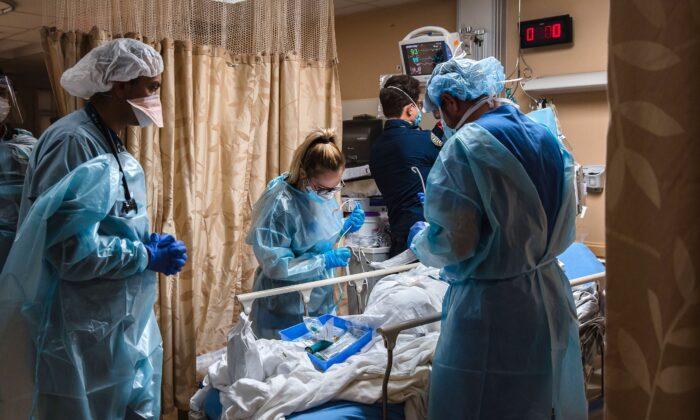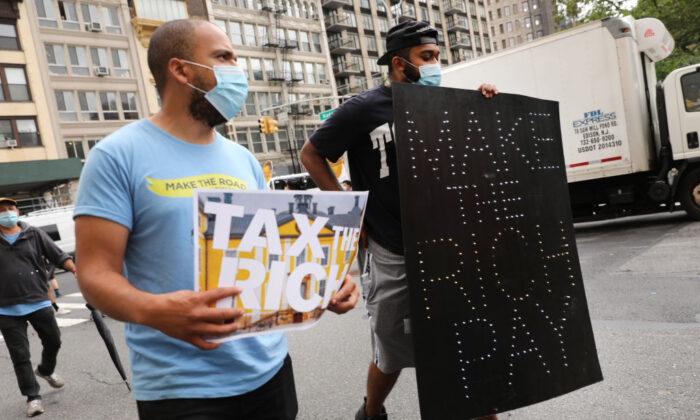The Health and Appropriations committees of the California Assembly voted to move forward with a mandatory $400 billion “comprehensive universal single-payer health care coverage” plan for all California residents.
The Appropriations Committee passed the bill without discussion.
“If the Appropriations Committee isn’t going to review the fiscal matters of a bill, what is the purpose of this committee?” asked Republican Assemblyman Vince Fong of Bakersfield, a committee member.
The last and only study regarding the cost of single payer in California was prepared in May 2017.
Assemblyman Fong could have added that a homeowner would be unwilling to rely on a single 2017 study to purchase something as inconsequential as a new garage door opener.
Assuming the federal government would provide California with 100 percent of all Medicare and Medicaid funds, the state would have $400 billion to operate its single payer program.
- Expected costs – Relying on a single study (five years old, or updated) is reckless. Multiple studies should be performed by independent consulting organizations; those without connection to either the advocates, or opponents, of single payer.
- Individual studies regarding potential increases in demand for each service offered need to be completed, as services would be free (i.e. if dental were free–what would be the increase in patients requesting dentures, implants, root canals, etc.?)
- Start-up costs: The 2017 study did not consider start-up costs, or the time necessary to begin providing single payer healthcare. Start-up costs could easily run in the tens of billions. Studies need to be performed to determine required day one reserves as well as all pre-operating costs, plus a study indicating the source of such funds.
- Vermont abandonment. Vermont abandoned its attempt to implement its own single payer plan. A study is necessary to determine why California would succeed where Vermont failed.
- A study needs be performed identifying the number and location of employees of the current healthcare delivery systems who will lose their current positions.
- A study needs to be performed identifying how, under a single payer system, health care providers would be able to purchase new equipment and build new facilities.
- Understanding of whether existing hospitals would expect to be able to maintain current service levels would be essential.
Citizens must be concerned as to whether the State of California has the capability of implementing a plan the scope of single payer.
California single payer calls for $163 billion of new California taxes. If the combination of these new taxes, plus the funds provided by the federal government, are insufficient, the California legislature by majority vote would have the right to increase the proposed taxes without limitation to either rate or allocation. Hence, new taxes of $163 billion per year would likely be only a starting point.
The proposed $163 billion in new taxes would result from (1) a 2.3 percent tax on gross receipts for companies with an excess of $2 million in gross sales, (2) a 1.25 percent payroll tax on employers with over 49 employees and (3) increases in individual tax rates for anyone having taxable income over $149,509.
The 2.3 percent gross receipts tax would essentially increase California’s inflation rate by 2.3 percent. A new regressive 2.3 percent gross receipts tax would fall hardest on lower income individuals.
The proposed increases to tax rates for all California taxpayers with taxable income in excess of $149,509 would result in the highest tax rates in the United States.
With these new California taxes, the 1.45 percent federal Medicare tax on both employees and employers would remain in place. Every working individual would pay the existing Medicare tax along with the new proposed taxes.
Medicare Part A, which is free, already provides for free inpatient care in a hospital, skilled nursing facility care, nursing home care, hospice care, and home health care. Why anyone currently receiving Medicare Part A, or expecting to receive Medicare Part A, would vote to approve the new taxes would be a mystery. Trading certainty for uncertainty with one’s health borders on craziness. Why anyone with acceptable health care from their employer would trade certainty for uncertainty is equally unclear.
Medicare and Medi-Cal recipients are designated by federal law. Whether the federal government can, should and/or would allow California to receive well over $200 billion annually of federal money, without precise assurance that the money would go to those who are entitled to it under federal law, is an interesting question. It is safe to assume that litigation would be filed to stop the federal government from abandoning their legal responsibilities to ensure that senior citizens receive the benefits of what they have invested in for their entire working lives.
The reality is that the Health and Appropriations committees of the California Assembly do not have nearly the information needed to make an informed decision regarding moving forward, or abandoning the notion of a California single payer health system.





